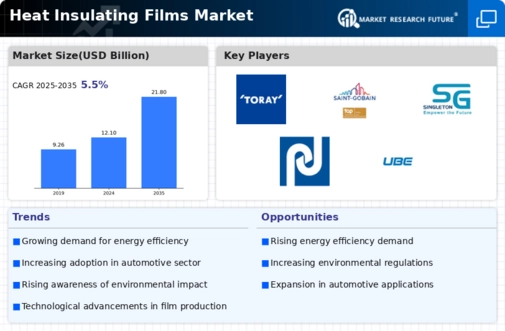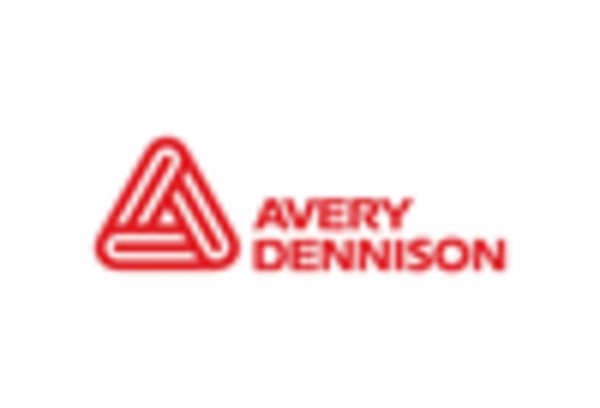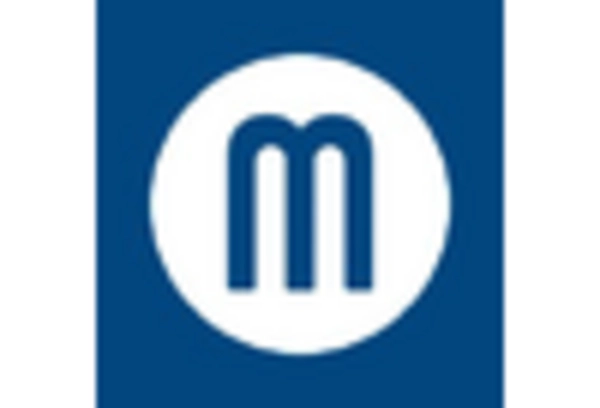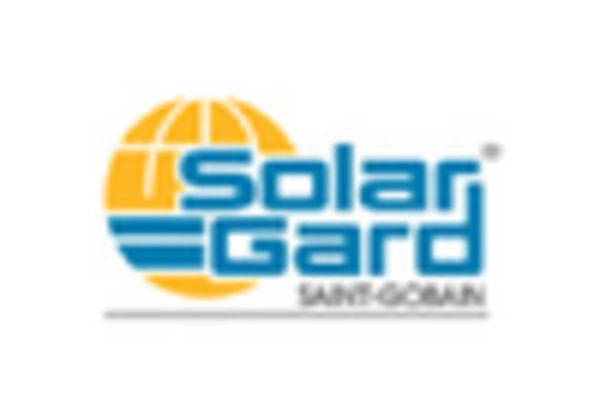Market Trends
Key Emerging Trends in the Heat Insulating Films Market
The Heat Insulating Films market is undergoing significant trends, reflecting the increasing importance of energy efficiency and climate-conscious building solutions. Heat insulating films, commonly used in windows and glass surfaces, play a crucial role in enhancing insulation, reducing energy consumption, and improving overall comfort in residential, commercial, and automotive applications.
One prominent trend in the Heat Insulating Films market is the growing focus on energy efficiency in buildings. As awareness of climate change and the need for sustainable practices rises, there is an increasing demand for solutions that contribute to energy conservation. Heat insulating films help regulate indoor temperatures by minimizing heat transfer through windows, reducing the reliance on heating and cooling systems. This trend aligns with global efforts to address environmental concerns and reduce carbon footprints.
The construction industry is a major consumer of Heat Insulating Films, particularly in the residential and commercial building sectors. As building codes and standards emphasize energy-efficient designs, heat insulating films have become integral to achieving thermal comfort. The market is witnessing a trend toward advanced film technologies that provide not only insulation but also address other concerns such as UV protection, glare reduction, and privacy enhancement.
The automotive sector is experiencing growth in the Heat Insulating Films market, driven by the desire for improved comfort and energy efficiency in vehicles. Heat insulating films applied to automotive windows help regulate interior temperatures, reduce the load on air conditioning systems, and enhance overall driving experience. As automotive manufacturers prioritize sustainability and user comfort, the demand for heat insulating films in the automotive sector is on the rise.
The Asia-Pacific region is a key player in the global Heat Insulating Films market. Countries such as China, Japan, and India are witnessing rapid urbanization, leading to increased construction activities and a surge in automotive production. The region's growing middle-class population, coupled with rising awareness of energy-efficient solutions, contributes significantly to the demand for heat insulating films in building and automotive applications.
Technological advancements in film materials and coatings are shaping trends in the Heat Insulating Films market. Continuous research and development efforts focus on improving the performance, durability, and optical clarity of heat insulating films. Nano-coatings, multi-layered films, and smart film technologies are examples of innovations that cater to specific requirements such as heat reduction, UV blocking, and dynamic light control.
Market trends indicate a shift toward dual-purpose films that offer both heat insulation and solar control functionalities. These films not only provide thermal insulation but also block a significant portion of solar radiation, helping to mitigate heat gain during sunny days. The versatility of dual-purpose films meets the multifaceted needs of consumers, architects, and automotive designers.
The market is witnessing increased customization and personalization in heat insulating films. Consumers and businesses are looking for films that not only provide functional benefits but also enhance aesthetic appeal. Customized designs, colors, and patterns in heat insulating films offer a level of personalization that aligns with architectural and automotive design preferences, contributing to the overall visual appeal of spaces and vehicles.
Stringent regulations and building standards related to energy efficiency are influencing the Heat Insulating Films market. Governments and regulatory bodies are imposing requirements for improved insulation in buildings to reduce energy consumption. Compliance with these standards is driving the adoption of heat insulating films as a cost-effective and practical solution for meeting energy efficiency goals in construction projects.
Market participants are focusing on sustainability in the production and disposal of heat insulating films. Eco-friendly materials, such as recycled content and low-emissivity coatings, are gaining traction in response to environmental concerns. Manufacturers are also exploring recyclable and biodegradable film options to address end-of-life considerations and contribute to a circular economy.
Fluctuations in raw material prices, particularly those related to specialty films and coatings, impact the Heat Insulating Films market. The availability and cost of materials such as polyester, polyethylene, and metalized coatings influence the overall cost structure of heat insulating film production. Market participants are closely monitoring these raw material dynamics to manage potential cost fluctuations and maintain competitiveness.

















Leave a Comment